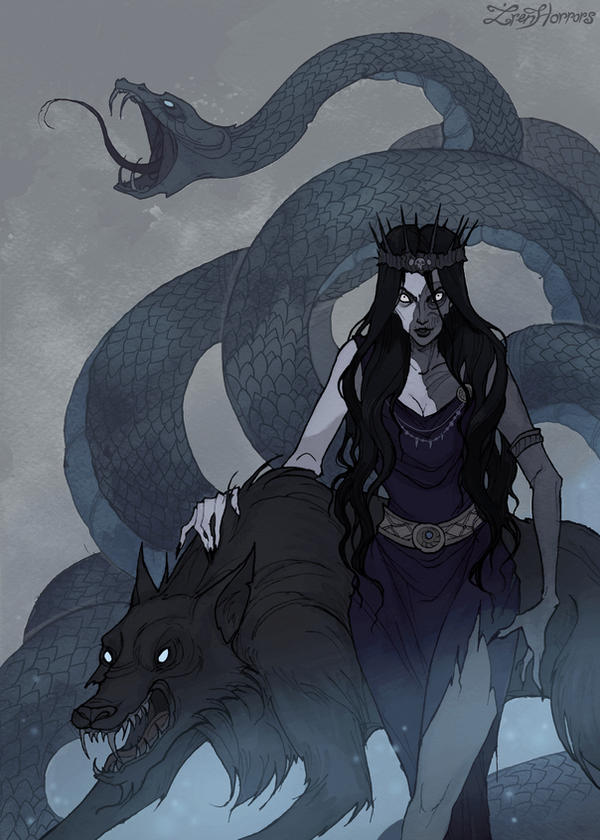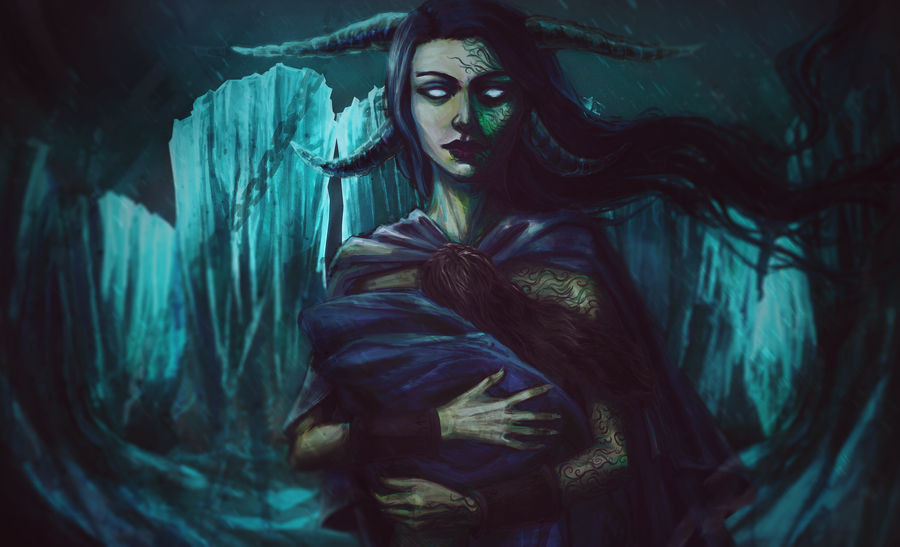Norse Queen of the Dead
Norse cosmos consisted of Nine Worlds. Each world in the myth was presided over by a specific figure. The land of the dead in the myth was no exception. Helheim was the land of the dead in Norse mythology and the figure that ruled this place was Hel the giantess.
The background of Hel
Hel was the daughter of Loki the Norse trickster. This made her become the sister of two notorious characters in the myth: Fenrir the giant wolf and Jormungandr the Midgard Serpent who encircled the whole Midgard. Each member of Loki's family soon parted with each other because of the prophecy revolving around these figures. Specifically, it was prophesied that Fenrir would swallow Odin during the events of Ragnarok, Jormungandr would poison the world and used the venom to kill Thor. So the Norse pantheon decided to separate Loki's family members, raising Fenrir by themselves up in Asgard, casting Jormungandr into the deep ocean of Midgard, and banishing Hel into the land of Helheim. (See The Children of Loki)

Loki's children
But one thing that gods did not expect was that every deed of them just served to ignite the flames of Ragnarok. As Hel was sent to the land of Helheim, she quickly built up her own army in the land of Helheim, the army of the deceased. The name of "Hel" meant "Hidden". Many believed that her name had something to do with the underworld and the corpses being hidden or buried deep beneath the ground.
Hel the Queen
Hel was presented as being greedy, harsh, and somewhat brutal. She appeared in the form of a not-so-beautiful woman, half black, half white, and her face was always full of grim and fierce expression.
The surviving material that Hel significantly featured was the Death of Baldur. The beloved god Baldur was killed by Loki the father of Hel. The gods sent Hermod into the land of Helheim to negotiate with Hel about retrieving Baldur back. Hermod told Hel that every creature in the cosmos cried because of Baldur's death. But that was not enough to persuade Hel into sending Baldur back to life. Hel said that as long as every last thing in the cosmos shed tears over Baldur, Hel would agree to release Baldur. Seeing this slight hope, Hermod and other gods started and got almost all creatures in the cosmos sweeping for Baldur. However, there was one giant, who was Loki in disguise, refused to do. Because of this only one refusal, the negotiation with Hel completely failed. And Baldur had to stay beside Hel.

Depiction of Hel in Helheim
Actually, not everyone who died went to Helheim in Norse mythology. Only those who died of sickness, old age, laziness, and generally died in an unhonorable way in the eyes of the gods would go to Helheim. Those who died bravely and honorably would have a seat in the Holy Hall of the Fallen presided over by Odin the Allfather. Helheim was the least favorite afterlife that one would love to come.
When Ragnarok took place, Hel sent out her army of the dead to join Loki's side fighting against Norse pantheon.




